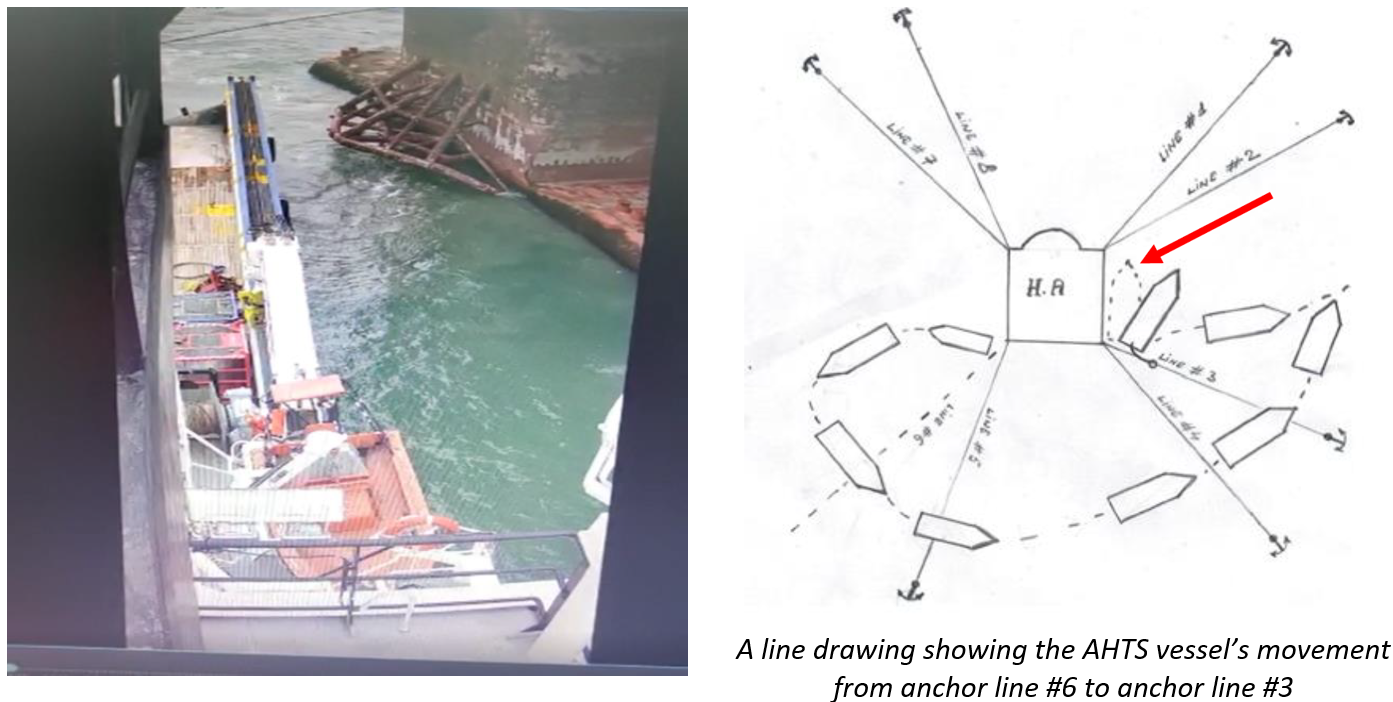A recent IMCA Safety Flash focuses on an incident in which, an AHTS vessel made a close approach to the mooring lines for an offshore rig, to provide lessons learned.
The incident
The AHTS was involved in anchor handling operations for the rig. The vessel passed anchor line #6 to the rig and started to move towards anchor line #3. Control of the vessel was transferred from forward to aft console. Once in position, the vessel received the PCP (Permanent Chasing Pennant) of anchor line #3 by rig crane and it was secured on the Karm fork. The rig’s crane was released, but the chaser’s collar slid on the anchor line towards anchor #3 and pulled the stern of the vessel to starboard, resulting in a bow side close approach to mooring line #2.
To stop this movement the Master activated the bow tunnel thruster, but the thruster did not start. As a result, the vessel bow had a close approach to mooring line #2. The Master immediately switched on all thrusters, obtained full manoeuvrability of the vessel, and the vessel pulled away safely.

What was the cause?
- Further review identified that the bow thruster electromotor was off. Machinery required for safe manoeuvring of the vessel had been disabled. The electromotors for the tunnel thrusters had been switched off by the chief officer to rest the machinery as the vessel was leaving the 500m zone. This fact had not been communicated to the Master;
- The fact that the servo pumps were running gave a false assurance of full operability of the thrusters;
- There was no check of full operability after transfer of vessel control from forward to aft control stations.
Actions taken
- Ensured that critical vessel equipment is not switched off or its operational mode changed without the approval of the person in charge on the bridge;
- Manual transfer of vessel control to be followed by mandatory thorough checks of all propulsion relevant to the operation;
- Developed comprehensive work instructions for bridge transfer control.

































































